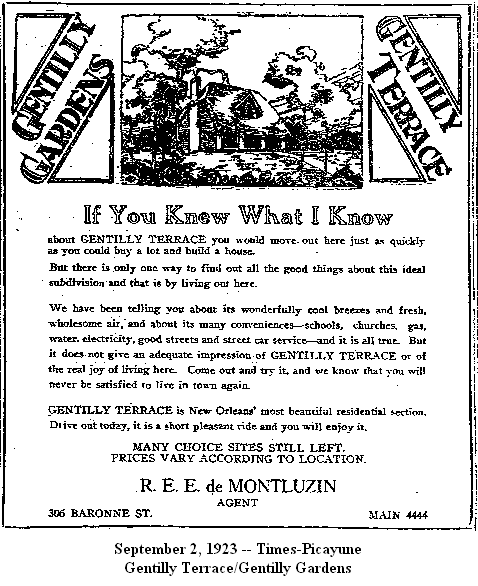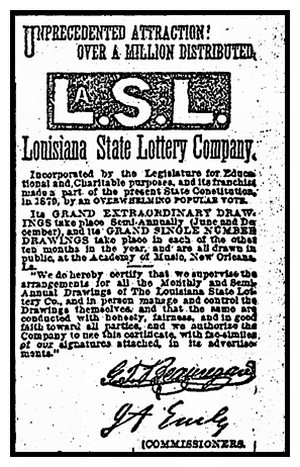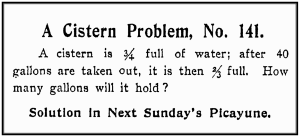|
Today in New Orleans History |
|
|
September 2


 To receive an update for each day in New Orleans history,
join our facebook page - Today in New
Orleans History.
The first part of Gentilly to be
developed was along the Gentilly Ridge, a long stretch of high ground along the former banks of Bayou Gentilly. A road,
originally "Gentilly Road", was built on the ridge, and formed the eastern path into the oldest part of the city,
today's French Quarter to Chef Menteur Pass. The high ground became Gentilly Boulevard and U.S.
Highway 90, part of the Old Spanish Trail from St. Augustine to Los Angeles. Settlement
was originally mostly confined to along the long narrow ridge, plus Milneburg, built on elevated piers on the shore of Lake
Pontchartrain. Most of the ground between the ridge and the lake was swampy. The first residential section adjacent to the
ridge, Gentilly Terrace, dating to the early 20th century, was built by excavating and piling up the earth in the shallow
swamp to create blocks of terraced land where houses could be built. With the development of improved drainage pumps, land
reclamation and higher lakefront levees, the land extending from the ridge to the lake was developed by the mid-20th century,
and the entire area popularly came to be known as Gentilly. Gentilly has traditionally been defined variously. Some
definitions include a somewhat wider area, extending the neighborhood into the Upper 9th Ward.
Some older New Orleanians extend the definition even further, to include the section of old Gentilly on the east side of the
Industrial Canal, now part of Eastern New Orleans. Other definitions diminish the area occupied by Gentilly by placing the
western boundary of Gentilly along the London Avenue Canal, not Bayou St. John, and the northern boundary along Leon C. Simon
Drive, not the shore of Lake Pontchartrain. By this reckoning, Vista Park and Oak Park, lying between the London Avenue
Canal and Bayou St. John, fall outside of Gentilly, as do the Lakefront subdivisions of Lake Terrace and Lake Oaks, and the
Lakefront campus of the University of New Orleans. (Wiki)  To receive an update for each day in New Orleans
history, join our facebook page
- Today in New Orleans History
Born in New Orleans on September 2, 1954, Vance Elliott DeGeneres is best known
locally as the former host of WRNO-FM radio's New Wave New Orleans show in the late 1970s, he was the bass guitar
player in the popular new-wave band The Cold in the early 1980s, originator of the role of "Mr. Hands" in
Walter Williams's Mr. Bill features on Saturday Night Live, a member of the band Cowboy Mouth, and Ellen's big brother.
He moved from New Olrean to work in television and film production. (Wiki) American model and actress China Lee, born Margaret Lee in New Orleans on September 2, 1942
to Chinese parents who had emigrated to the United States after their marriage. She is the youngest of eight children
and the younger sister of Harry Lee, who served as the sheriff of Jefferson Parish for 28 years. Lee worked as a hairstylist
and waitress, then as a Playboy Club Bunny, before appearing in Playboy. She had been a "Training Bunny," which
required her to travel to different Playboy Clubs to teach prospective Bunnies their duties. She was Playboy's Playmate of
the Month for the August 1964 issue, and the first Asian American Playmate. Her centerfold was photographed by Pompeo Posar.
According to her Playmate profile, her name is pronounced "chee-na" to rhyme with "Tina". The name "China"
is derived from the nickname "Chinita" ("little Chinese girl") bestowed on her by Spanish-speaking neighbors
who admired her dancing as a child. Lee appeared at the end of Woody Allen's What's Up, Tiger Lily?, performing a striptease.
She married comedian Mort Sahl in 1967. They divorced in 1991. Their only child, Mort Sahl, Jr. died on March 27, 1996 at
the age of 19. (Wiki)
On September 2, 1909, New Orleans was first linked by rail to Houston. Amid celebrations
and ceremonies the train left the New Orleans Terminal Station at 6:10 A.M. On board were Ben R. Mayer representing
the Mayor of New Orleans, F.B. McQueety, Secretery of the Baton Rouge Board of Trade representing the board, and other officials.
The first stop was at the Edenborn Depot (Gonzales. Louisiana) where large delegations from the board along with businessment
in general awaited the train. Extending congratulations were Joe Gottelieb, Jules Rpux, S.H. Reymond, W.N. Barrow, N.S. Dougherty,
R.J. Hummell, H.N. Wax, Abe Abramson, Dupre Stondard, Pat Aldrich, J.N. Ogden, Fred Greace, W.N. McFarland, and Alexander
Grouchy.
The Ammonia Motor & Railway Company was chartered on September 2, 1890 with the intention
of building motorcars and locomotive driven streetcars during the era when streetcar were pulled by horses and mules.
Organizers Artwood Violett, Thomas Woodward, and J.L. Byrne were motivated by the comparative cost differences between streetcars
pulled by mules ($9.910 per car per day) and by ammonia locomotives ($6.775 per day). Similar to steam engines in design,
the aqua-ammonia engines used 1/5 part ammonia to 4.5ths water heated in circulating tubes by a coal fire. Steam-powered streetcars
remained in use until February 1, 1893 when the city electrified the lines, with the exception of some electric cars (still
not perfected) used in 1884 for the World Cottom Centennial (World's Fair) at Audubon Park.
During the aftermath of Hurricane Katrina, on September 2, 2005, the charred body
of Henry Glover was found in a destroyed Chevrolet Malibu parked on a Mississippi River levee. He was last seen uninjured
on September 2, four days after the storm, by his sister. Five current and former officers of the New Orleans Police Department were charged with Glover's death. (Wiki)
|
|
|

To receive an update for each day in New Orleans history,
join our facebook page - Today in New
Orleans History.
Analytics |

 Louisiana Lottery advertisment, September 2, 1909.
Louisiana Lottery advertisment, September 2, 1909.

